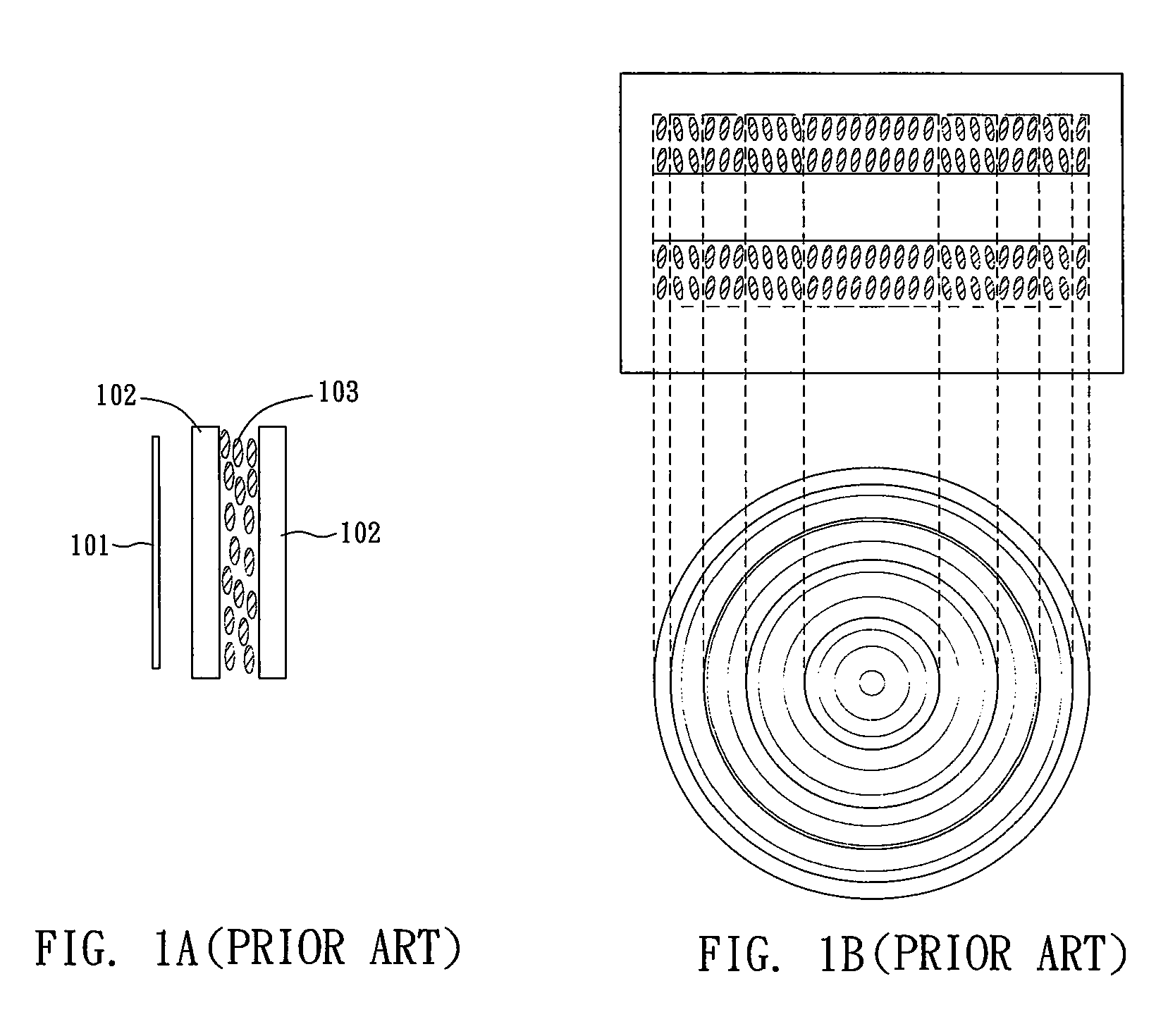Liquid crystal lens with variable focus
a liquid crystal lens and variable focus technology, applied in non-linear optics, instruments, optics, etc., can solve the problems of long response time, slow switching speed, and inability to control precision, so as to reduce the problem of aperture decentering, improve the switch speed of focus, and facilitate adjustment
- Summary
- Abstract
- Description
- Claims
- Application Information
AI Technical Summary
Benefits of technology
Problems solved by technology
Method used
Image
Examples
first embodiment
The First Embodiment
[0028]Refer to FIG. 2&FIG. 3, a single-layer liquid crystal lens with variable focus 1 of the present invention comprising: in the order from an object side to an image side, a single-side electrode glass substrate 10b (a glass substrate 10 disposed with a surface electrode pattern 20 on one side), a spacer 40, a liquid crystal layer 30 and a single-side electrode glass substrate 10b. Wherein, the surface electrode pattern 20 is a metal membrane such as aluminum, silver or gold membrane coated on the glass substrate 10 and the metal membrane is transparent, aluminum surface electrode pattern is used in this embodiment. Wherein, the surface electrode pattern 20 is a single hole pattern, the membrane is etched to form a single-hole aperture 11. Wherein, the spacer 40 can be a circular piece or overlapped circular pieces. The distance of a gap between the two glass substrates 10 is defined by the spacer 40 and this is also the thickness of the liquid crystal layer 3...
second embodiment
The Second Embodiment
[0038]Refer to FIG. 9, a double-layer liquid crystal lens with variable focus 2 of the present invention comprising: in the order from an object side to an image side, a single-side electrode glass substrate 10b, a spacer 40, a first liquid crystal layer 30, a double-side electrode glass substrate 10a, a spacer 40, a second liquid crystal layer 30 and a single-side electrode glass substrate 10b. Wherein, the spacers 40 are arranged among the two single-side electrode glass substrates 10b and the double-side electrode glass substrate 10a to define the two liquid crystal layers 30. The incident light passes the first liquid crystal layer 30 and the second liquid crystal layer 30, being reflected twice. Wherein, the metal membrane of the surface electrode pattern 20 is made from silver in this embodiment. When voltage is applied to the first liquid crystal layer 30 as well as the second liquid crystal layer 30 respectively and the reflective index n1 and n2 are gen...
third embodiment
The Third Embodiment
[0043]Refer to FIG. 10, a multiple-layer liquid crystal lens with variable focus 3 of the present invention, in FIG. 10 is shown a triple-layer liquid crystal lens, comprising of a single-side electrode glass substrate 10b, a spacer 40, a first liquid crystal layer 30, a double-side electrode glass substrate 10a, a spacer 40, a second liquid crystal layer 30, a double-side electrode glass substrate 10a, a spacer 40, a third liquid crystal layer 30, and a single-side electrode glass substrate 10b from the object side to the image side. The spacers 40 are arranged among the two single-side electrode glass substrates 10b on outer side and the two double-side electrode glass substrates 10a on inner side to define the three liquid crystal layers 30. The incident light passes the first liquid crystal layer 30, the second liquid crystal layer 30, and the third liquid crystal layer 30, being reflected three times. When voltage is applied to the first liquid crystal layer...
PUM
| Property | Measurement | Unit |
|---|---|---|
| thickness | aaaaa | aaaaa |
| transparent | aaaaa | aaaaa |
| voltage | aaaaa | aaaaa |
Abstract
Description
Claims
Application Information
 Login to View More
Login to View More - R&D
- Intellectual Property
- Life Sciences
- Materials
- Tech Scout
- Unparalleled Data Quality
- Higher Quality Content
- 60% Fewer Hallucinations
Browse by: Latest US Patents, China's latest patents, Technical Efficacy Thesaurus, Application Domain, Technology Topic, Popular Technical Reports.
© 2025 PatSnap. All rights reserved.Legal|Privacy policy|Modern Slavery Act Transparency Statement|Sitemap|About US| Contact US: help@patsnap.com



